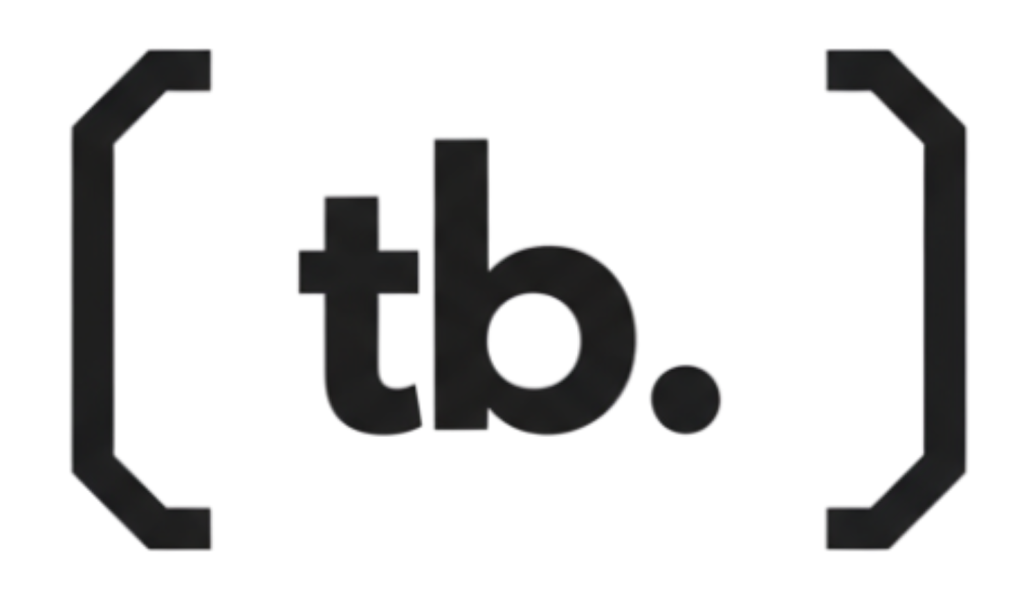Your credit score is more than just a number—it’s your financial passport that determines whether lenders trust you with loans, what interest rates you’ll pay, and even your eligibility for rental apartments and insurance rates. Fortunately, mastering proven credit score hacks can boost your score by 100+ points within months, transforming your financial opportunities dramatically. With credit scores ranging from 300 to 850, understanding strategic credit score hacks can mean the difference between paying thousands in extra interest or enjoying favorable financial opportunities.
Importantly, boosting your credit score by 100 points might sound impossible, but it’s absolutely achievable with the right credit score hacks. In fact, research shows that individuals who focused on strategic improvements paid off an average of $20,000 in debt within a year and saw dramatic score increases. The best part? Many of these credit score hacks are completely free and require just a few hours of your time to implement.
This comprehensive guide reveals proven credit score hacks, rapid improvement tactics, and legitimate strategies to transform your financial profile in 2025. Whether you’re starting from a poor score or seeking to reach excellent credit status, these actionable credit score hacks will accelerate your journey to financial freedom.
Understanding Credit Scores
Before implementing credit score hacks, you must understand how credit scores are calculated. Specifically, your FICO score, used by 90% of lenders, breaks down into five distinct components, each weighted differently. These factors represent your complete financial picture and determine your creditworthiness.
The Five Credit Score Factors

Understanding each component helps you target your improvement efforts strategically. Moreover, knowing these percentages reveals where to focus your energy for maximum score impact.
Payment History (35%)
Payment history carries the heaviest weight in credit scoring models, accounting for 35% of your FICO score. Furthermore, this factor measures whether you’ve paid all bills on time, and even a single 30-day late payment can devastate your score by 100-150 points. Additionally, the impact of late payments diminishes over time but stays on your credit report for seven years. Importantly, missing payments by 60, 90, or more days creates progressively worse damage.
Amounts Owed (30%)
Credit utilization—the percentage of available credit you’re using—comprises 30% of your score. In fact, most experts recommend keeping utilization below 30%, though staying under 10% is ideal for maximum score benefits. For example, if you have five cards with $5,000 limits each ($25,000 total) and carry $7,500 in balances, you’re at 30% utilization. Consequently, increasing this ratio to 50% or higher significantly reduces your score.
Length of Credit History (15%)
Older credit accounts demonstrate a longer track record of responsible borrowing, contributing 15% to your score. Importantly, the average age of all your accounts matters, as does your oldest account’s age. This is why closing old credit cards can hurt your score—it reduces both the average age and total available credit.
Credit Mix (10%)
Successfully managing different credit types—credit cards (revolving), auto loans, mortgages, student loans (installment)—accounts for 10% of your score. Furthermore, lenders view diverse credit management positively, as it demonstrates you can handle multiple obligations.
New Credit (10%)
Recent credit inquiries and new accounts constitute 10% of your score. Specifically, each hard inquiry (when a lender pulls your credit for a loan application) can lower your score by up to 5 points. Additionally, opening multiple new accounts in a short timeframe raises concerns about credit desperation
Credit Score Hacks That Work: Proven Rapid Improvement Strategies
Hack #1: Dispute Credit Report Errors (Potential 50-150 Point Boost)

Approximately 5% of consumers have errors on their credit reports that negatively impact their scores. Finding and disputing these errors represents the fastest potential boost, sometimes resulting in dramatic score increases within 30-45 days.
How to Execute This Hack
First, obtain free copies of your credit reports from all three bureaus (Equifax, Experian, TransUnion) at AnnualCreditReport.com. Thoroughly review each report for inaccuracies including incorrect account balances, accounts that aren’t yours, wrongly-reported late payments, or duplicate entries.
Next, send written disputes to both the credit reporting agencies and the information providers (creditors who reported the errors). Use certified mail with return receipt requested to document delivery. Your dispute letter must include your complete name and address, a clear description of each error, why you dispute it, and copies (not originals) of supporting documents.
Credit bureaus must investigate within 30 days (unless they deem the dispute frivolous), and proven errors must be removed or corrected immediately. Upon successful resolution, you receive a free corrected credit report.
Why This Hack Works
Errors that artificially lower your score disappear instantly once corrected, sometimes resulting in score increases of 50-150 points depending on the error’s severity.
Hack #2: Strategic Credit Card Payment Timing (20-50 Point Boost Within 30 Days)

Credit card companies typically report balances to credit bureaus on or around your billing cycle date, not your actual payment due date. This creates a powerful hack for rapidly lowering your utilization ratio.
How to Execute This Hack
Monitor your credit card statement dates and pay down your balance significantly before the statement date closes, rather than waiting until the due date. For example, if your statement closes on the 15th of each month, reduce your balance to 10% or lower before that date.
This timing hack is particularly powerful because credit utilization updates monthly based on the most recently reported balances. A single strategically-timed payment can lower your utilization ratio within weeks, improving your score immediately at the next reporting cycle.
Why This Hack Works
Credit utilization comprises 30% of your score, making it the second-most impactful factor. Even if you normally carry higher balances, having a low balance reported to credit bureaus improves your score substantially.
Hack #3: Authorized User Status (10-30% Score Increase Within 30-90 Days)
Becoming an authorized user on someone else’s credit card (typically a family member or trusted friend with excellent credit) represents one of the fastest hacks for score improvement. This is sometimes called “credit piggybacking.”
How to Execute This Hack
Ask a family member or close friend with excellent credit (800+ FICO score ideally) and healthy financial habits to add you as an authorized user to their established credit card. The best candidates are accounts with high credit limits, low utilization, and long payment history.
You don’t need to use the card or even receive a physical card to benefit—the account simply needs to appear on your credit report. Most credit card companies report authorized user information to credit bureaus within 60-90 days.
Why This Hack Works
The account’s complete history (age, payment history, utilization) transfers to your credit report, artificially boosting your profile. For those with scores below 550, becoming an authorized user can increase scores by 10% within 30 days and up to 30% within 12 months.
Important Caution
Only become an authorized user on accounts with responsible account holders, low balances, and perfect payment histories. If the primary cardholder misses payments or maintains high balances, your score suffers equally.
Hack #4: Pay Existing Collections Accounts (Immediate 50-100 Point Boost)
Collections accounts devastate credit scores, often dropping them by 100+ points. However, paying off collections accounts, particularly recent ones, provides immediate score recovery.
How to Execute This Hack
Collections accounts devastate credit scores, often dropping them by 100+ points. Importantly, however, paying off collections accounts, particularly recent ones, provides immediate score recovery. Specifically, recent collections paid within the last 6-12 months show potential improvement. Furthermore, lenders view paid collections more favorably than unpaid ones. Nevertheless, the account remains on your report for 7 years from the original delinquency date. Fortunately, however, its impact diminishes dramatically after payment.
Why This Hack Works
Collections accounts are serious negative entries. Paying them removes the account status showing non-payment, immediately improving your credit profile.
Hack #5: Become Current on Past-Due Accounts (Variable 50-100+ Point Boost)
If you have past-due balances on any account (credit cards, loans, utility bills), becoming current represents a critical hack for rapid score recovery.
How to Execute This Hack
Contact creditors and create payment arrangements to bring all accounts current. If possible, pay past-due amounts in full immediately. Even if you cannot pay the entire past-due amount, making payments demonstrates renewed responsibility.
Each month an account remains delinquent hurts your score continually. Conversely, each month of on-time payments after becoming current steadily rebuilds your score.
Why This Hack Works
Delinquent accounts actively damage your score monthly. Stopping the damage and restarting the positive payment history are among the fastest score recovery methods.
Advanced Credit Hacks: Amplifying Your Results
Hack #6: Multiple Payments Per Month (15-30 Point Boost)
While a brilliant yet underutilized hack, making multiple credit card payments per month significantly reduces your average daily balance reported to credit bureaus.
How to Execute This Hack
If you normally make one payment on day 25, try paying on days 10 and 25 instead. This spreads your payments throughout the month and reduces the average balance creditors observe.
Some advanced practitioners pay multiple times weekly, keeping balances at near-zero levels regardless of how much they spend.
Why This Hack Works
While you only see one statement date per month, creditors track your account daily. Multiple payments keep your average balance lower, which improves your utilization score even if your statement-date balance appears high.
Hack #7: Request Credit Limit Increases (0-20 Point Boost Per Increase)
Increasing your credit limits without increasing your balances directly reduces your credit utilization ratio, providing an immediate score boost.
How to Execute This Hack
Call your credit card issuers and request credit limit increases. You may be asked for income verification, but many issuers grant increases without hard inquiries. Some credit cards offer automatic increases after demonstrating responsible use.
Why This Hack Works
If you have a $3,000 limit with a $1,000 balance (33% utilization) and successfully increase your limit to $5,000, your utilization drops to 20% instantly. Since utilization comprises 30% of your score, this can boost scores by 10-20 points or more.
Hack #8: Dispute “Hard Inquiries” (5-10 Point Boost Per Removal)
Hard inquiries from unauthorized sources or duplicate inquiries can be disputed and removed from your credit report.
How to Execute This Hack
Review your credit report for inquiries you don’t recognize or duplicate inquiries from the same lender. Dispute these inquiries directly with credit bureaus, claiming you didn’t authorize them.
While authorized inquiries cannot be removed, unauthorized ones should be disputed immediately.
Why This Hack Works
Each hard inquiry can lower your score up to 5 points. Removing multiple unauthorized inquiries can result in combined 10-20 point increases.
Hack #9: Create Experian Boost (Instant Results)
Experian Boost allows you to add utility, phone, streaming, and rental payment histories to your Experian credit report, potentially improving your score instantly.
How to Execute This Hack
Visit ExperianBoost.com, link your bank accounts, and authorize Experian to scan for eligible payments. Select which payments to add to your credit file (typically utility, phone, streaming, insurance, rent).
Why This Hack Works
These alternative payment histories immediately appear on your Experian report, potentially boosting your VantageScore and improving your overall credit profile.
Timeline to 100-Point Improvement: Realistic Expectations

First 30 Days (Potential 30-50 Point Increase)
Focus first on correcting credit report errors and making your initial strategic credit card payment before statement dates. Additionally, dispute and remove any unauthorized hard inquiries and become an authorized user on an excellent account if possible.
60-90 Days (Potential Additional 30-40 Point Increase)
By this point, lenders have reported your corrected information to credit bureaus. Your authorized user account should now appear on your report, and multiple months of on-time payments have accumulated.
6 Months (Potential 70-100 Point Total Increase)
Six months of consistently on-time payments, maintained low credit utilization, and the authorized user account history have substantially improved your profile. Collections payments from this period demonstrate positive action.
12 Months (Potential 100+ Point Total Increase)
Researchers found that individuals paying off $20,000+ in debt over 12 months achieved 100+ point score increases. Your year-long history of perfect payments, low utilization, and debt reduction creates dramatic score recovery.
Credit Score Myths vs. Hacks: Avoiding Counterproductive Actions
Myth: You Need to Carry a Balance to Build Credit
Reality: Paying off your entire balance monthly is superior to carrying a balance. Credit utilization considers current balance, not payment history. Carrying a balance while paying interest wastes money and offers zero credit advantage.
Myth: Checking Your Credit Hurts Your Score
Reality: Soft inquiries (when you check your own credit) have zero impact on your score. Only hard inquiries from lenders hurt your score. Checking your credit monthly helps you identify improvement opportunities.
Myth: Closing Old Credit Cards Helps Your Score
Reality: Closing old accounts hurts your score by reducing available credit and your average account age. Keep old accounts open even if unused, as they strengthen your credit profile.
Myth: Paying Off Collections Removes Them Immediately
Reality: Paid collections remain on your report for 7 years from original delinquency, though their impact lessens over time. However, paying them still improves your score compared to unpaid collections.
Myth: Your Income Affects Your Credit Score
Reality: Income never appears on your credit report and has zero impact on credit scoring calculations. Credit scores reflect borrowing and repayment history only.
Common Mistakes That Sabotage Credit Score Improvements
Applying for Multiple Credits Simultaneously
Each hard inquiry reduces your score by up to 5 points. Applying for multiple cards within 90 days signals credit desperation and can lower your score 20-30+ points. Limit applications to one per 3-6 months.
Maxing Out New Credit Cards
Opening a new card then immediately raising your utilization defeats the purpose. New accounts already hurt your score temporarily. Keep new cards at near-zero balances for 6-12 months before using them heavily.
Ignoring Payment Due Dates
Even one late payment by 30+ days can reduce your score 100-150 points and stays on your report 7 years. Set up automatic minimum payments as a safety net, then manually pay higher amounts.
Closing All Old Accounts After Debt Payoff
Many people close paid-off credit cards, believing it helps their score. Instead, this removes positive account history and available credit, hurting your score. Keep old accounts open with minimal usage.
Assuming Your Credit is Fixed Immediately
Credit score improvements take time. Realistic timelines are 30 days (initial changes), 90 days (noticeable improvements), and 6-12 months (dramatic recovery). Patience is essential for lasting credit health.
Special Situations: Targeted Credit Score Hacks
After Bankruptcy or Foreclosure
Bankruptcy remains on your report 7-10 years but loses impact over time. Start immediately by becoming current on all non-discharged accounts, becoming an authorized user on excellent accounts, and considering secured credit cards.
Research shows bankruptcy filers can reach “good” credit within 12-24 months with aggressive positive action. The key is reestablishing healthy patterns immediately after discharge.
For Credit-Invisible Consumers (New to Credit)
Individuals without credit history can become authorized users immediately or apply for secured credit cards. Starting with $500-1,000 deposits, secured cards require minimal qualification and build history quickly.
For Perfect Payment Histories Stuck at Fair Credit
If you’ve maintained perfect payments for 6+ months but still have fair credit (580-669 range), focus on credit utilization and authorized user accounts rather than additional new credit.
30-Day Credit Score Hack Action Plan
1st Week
- Get free credit reports from all three bureaus at AnnualCreditReport.com
- Identify errors, unauthorized inquiries, and collection accounts
- Start disputes with credit bureaus and creditors
2nd Week
- Request credit limit increases from all credit card issuers
- Contact collection agencies to negotiate payment arrangements
- Set up multiple payment dates for credit cards
3rd Week
- Become current on any past-due accounts
- Ask trusted family members about authorized user opportunities
- Enroll in Experian Boost and similar programs
4th Week
- Verify error dispute progress with credit bureaus
- Pay down credit card balances to below 10% of limits
- Review your credit profile on free monitoring services
Conclusion
Improving your credit score by 100 points is absolutely achievable in 2025 with the right strategy, discipline, and timing. Furthermore, whether you’re combating past financial mistakes or simply seeking excellence, these proven credit score hacks accelerate your journey dramatically. Most importantly, remember that consistency matters far more than perfection—even small improvements compound monthly into remarkable credit recovery.
The fastest results combine multiple strategies: dispute errors aggressively, leverage authorized user accounts, pay down existing balances strategically, and establish rock-solid payment histories. Within 6-12 months of focused effort, most individuals can achieve their target credit scores and access the financial opportunities that excellent credit unlocks.
Your credit score reflects your financial discipline and trustworthiness. By implementing these hacks systematically, you’re not just gaming the system—you’re building genuine financial responsibility that will benefit you for decades to come.



